|
|
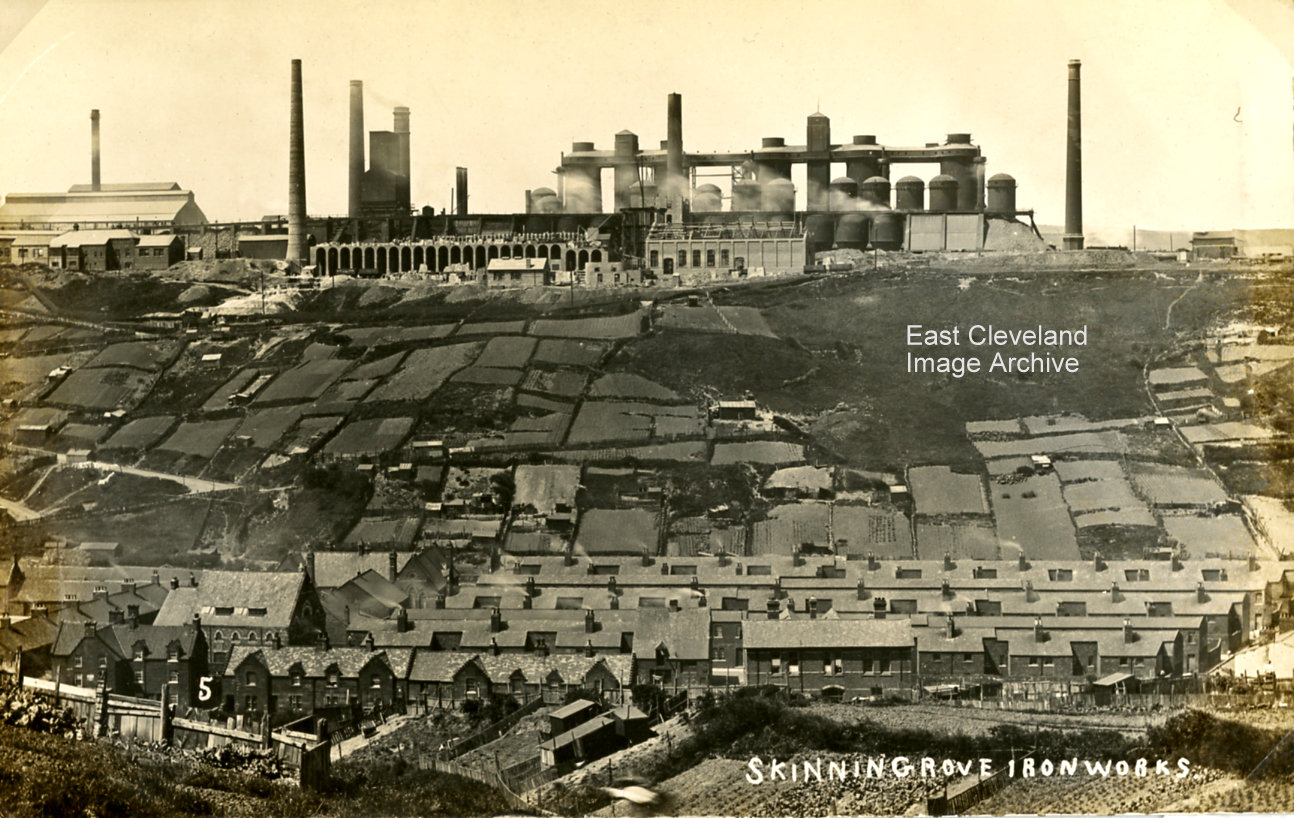
A view over the village to the ironworks, taken from the allotments on the east side of the valley. This card was produced at the same time as the one of Skinningrove from the cliffs, by William Richardson & Sons, Loftus; and was one of the Penny Real Photo Series.
Image courtesy of Beryl Morris.

Another photograph from the jubilee brochure of Carlin How Working Men’s Club, this time taken on the bowling green. We asked: “We are sure you will be able to tell us the names of some of the men there?” Derick Pearson told us: “First left is Norman Robinson, Dennis Preston, Jack Verrill; kneeling Mr Carveth and Jack Dredge., Standing Jim Nicholson. Group on right: first left standing is Bill Harrison (nicknamed Mellon or Lemon); far right Mr Husband. Mrs Bob Butterworth and ? Blenkey sat on seat.”
Thanks to Derick Pearson for names update.

Another photograph taken in the jubilee year of Carlin How Club the men are all named,as the Committee and officials. Back row: J. T. Harrison, T. G. Webster, J. Verrill (Sports Secretary), G. R. Burns, William H. Harrison (Vice President), J. Black, J. Dredge, J. Preston, G. Limon.
Front row: N. W. Robinson, J. Husband, J. W. Carveth (Secretary), G. T. Smith (President), L. Smith (Treasurer), J. Nicholson, E. Scott.
Colin Verrill tells us: ”it was taken on the tennis court next to the tennis pavillion, there were two red shale courts and four grass courts”.
Thanks to Colin Verrill for the update.
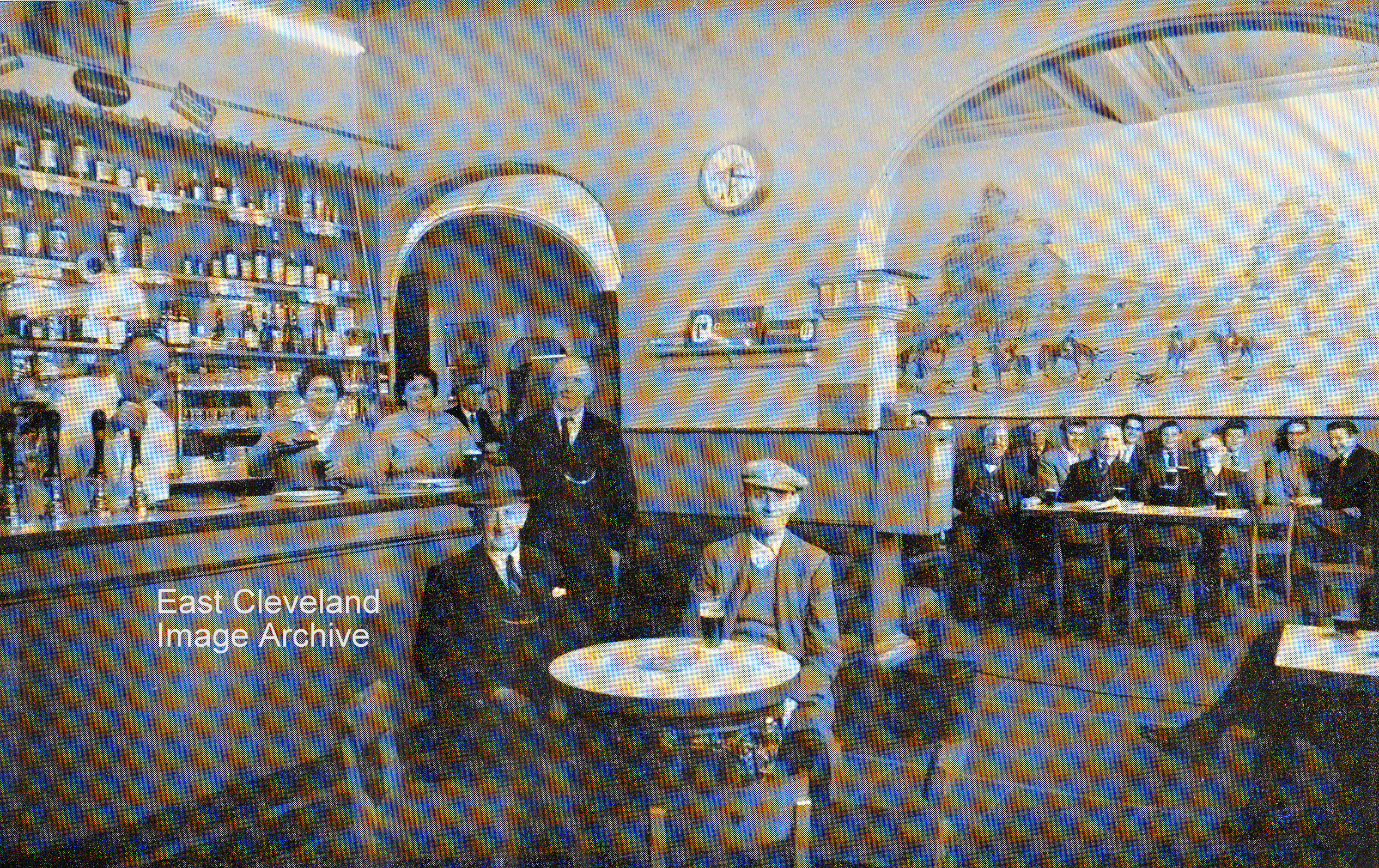
Carlin how Working Men’s Club; yes once it was a man’s domain but not any more, women are now on the committee. When this photograph was taken in the Jubilee year of the club, it was men only in the bar and billiard room; some of the men here are: seated in front: Mr Husband and Mr Winspear. Standing behind them is Bob Butterworth (Club Steward) and stewardess are Charlie and Mary Partridge. The lady at the far end of the bar is Mrs Webster and standing next to her is Mr Webster, some of those seated to the rear are, Ted Simpson, Dick Tyreman, Tom Ward, Derick Smith, Brian Yeoman, Barry Lancaster, Brian Ferguson. Karen Bates tells us: “The Steward and Stewardess were my Nana and Grandad – Charlie and Mary Partridge. They moved on to pubs in the Darlington area after this. The Partridge family are shown living at 11 Bells Huts in 1901 and 1911. Previous to this the family lived at Wood Cottages. There were a number of children in this family and my grandmother was Elsie Prosser Partridge.”
If you know any more of the men please let us know.
Many thanks to Karen Bates and Barry Lancaster for the updates.
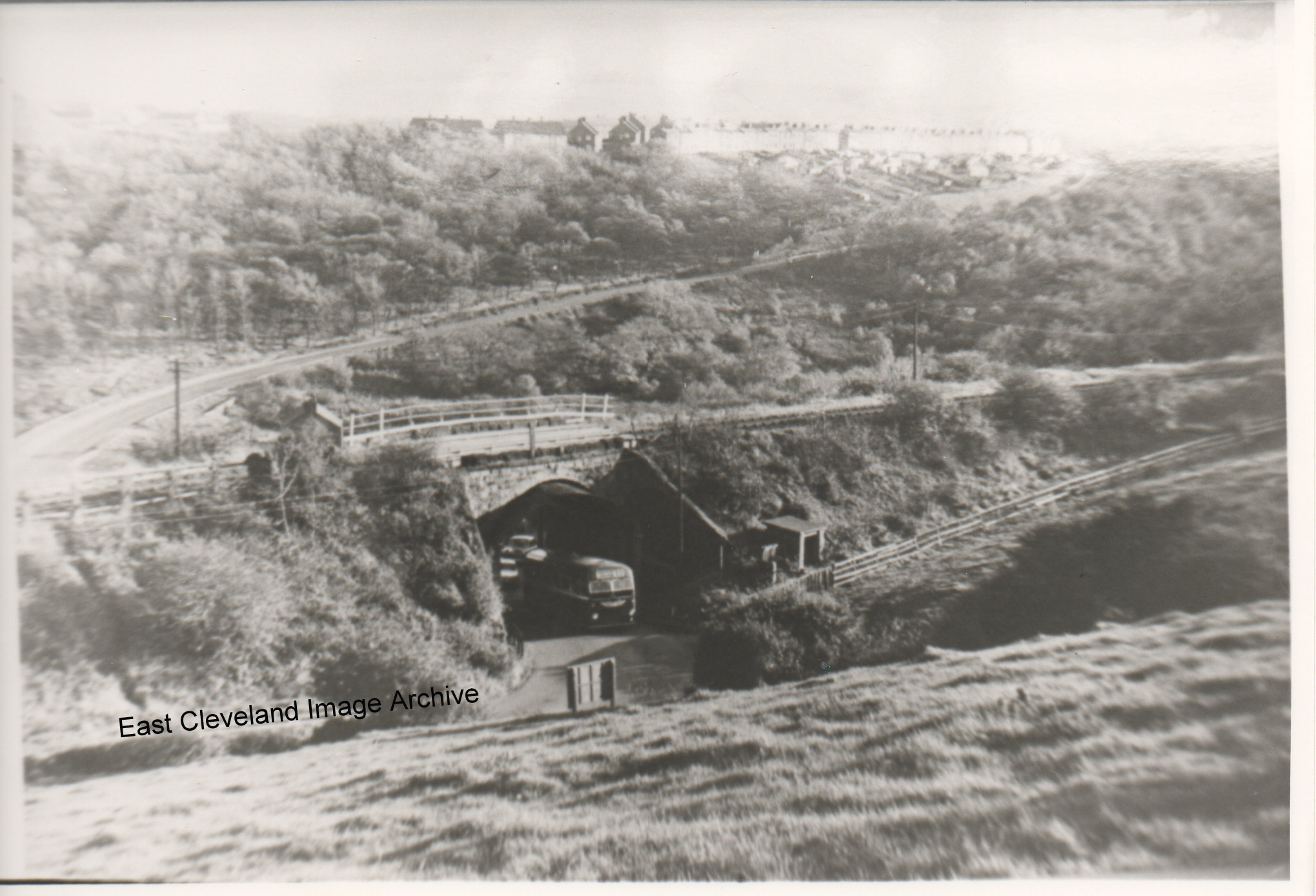
Looking down the bank from Carlin How, this is before the bank was altered it was a tight corner under that bridge, we can see where the railway went over and the bank going up to Loftus. Derick Pearson tells us: ” This was a difficult bend to negotiate and if two buses came from opposite directions one had to back off to let the other pass. Under the bridge itself were some very large timbers in an A frame construction supporting the sides. I remember when only in my teens there was a motor bike accident in which a bike crashed into a Saltburn Motor Service bus, possibly the late 1950s or early 1960s, this was a not infrequent incident under this bridge.” When was the bank altered?
Thanks to Derick Pearson for the update.
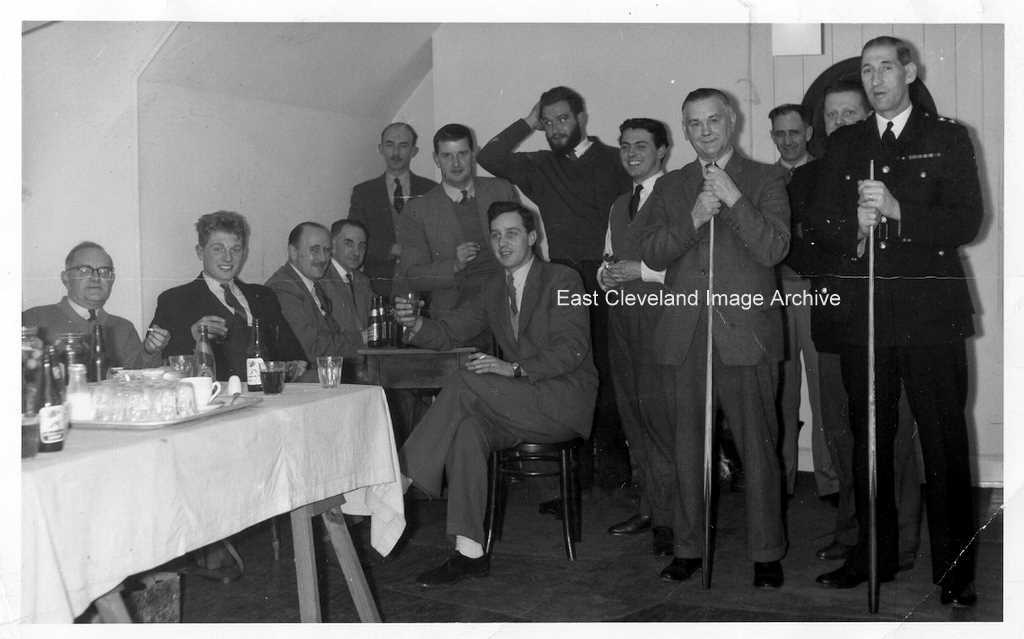
The games room in Loftus Police Station – this must have been an official function, can anyone identify the group or the event? The gentleman with the beard at the rear of the group looks suspiciously like Neil Empson.
L to R: Bert Davey, PC John Liley, PC Jimmy Agar, PC Bill Hutchinson, PC Peter Crosier, Maurice Stephenson, Neil Empson, Mr Littlewood, Mr Mapplebeck, Harold Norminton, PC Alf Souter, PC Bruce Wallace, Inspector Cullingworth.
Linda Anderssen tells us: ”My Dad is in this picture – and I remember a number of the other men – I lived in the Police Houses when I was a child, I also remember the room at the top of the police station where the snooker tables where. I used to feel on top of the world when I had climbed the beautiful spiral staircase to the top on the rare occasions when I was allowed to visit.”
Sue Mulholland (nee Wallace) tells us: ”My dad, P.C Bruce Wallace (almost hidden from view), is second from the right.”
Thanks Eric Johnson, Ken Gillance, Tina Woodrow (nee Whetton), Linda Anderssen, Sue Mulholland (nee Wallace) and Audrey Souter for updates.
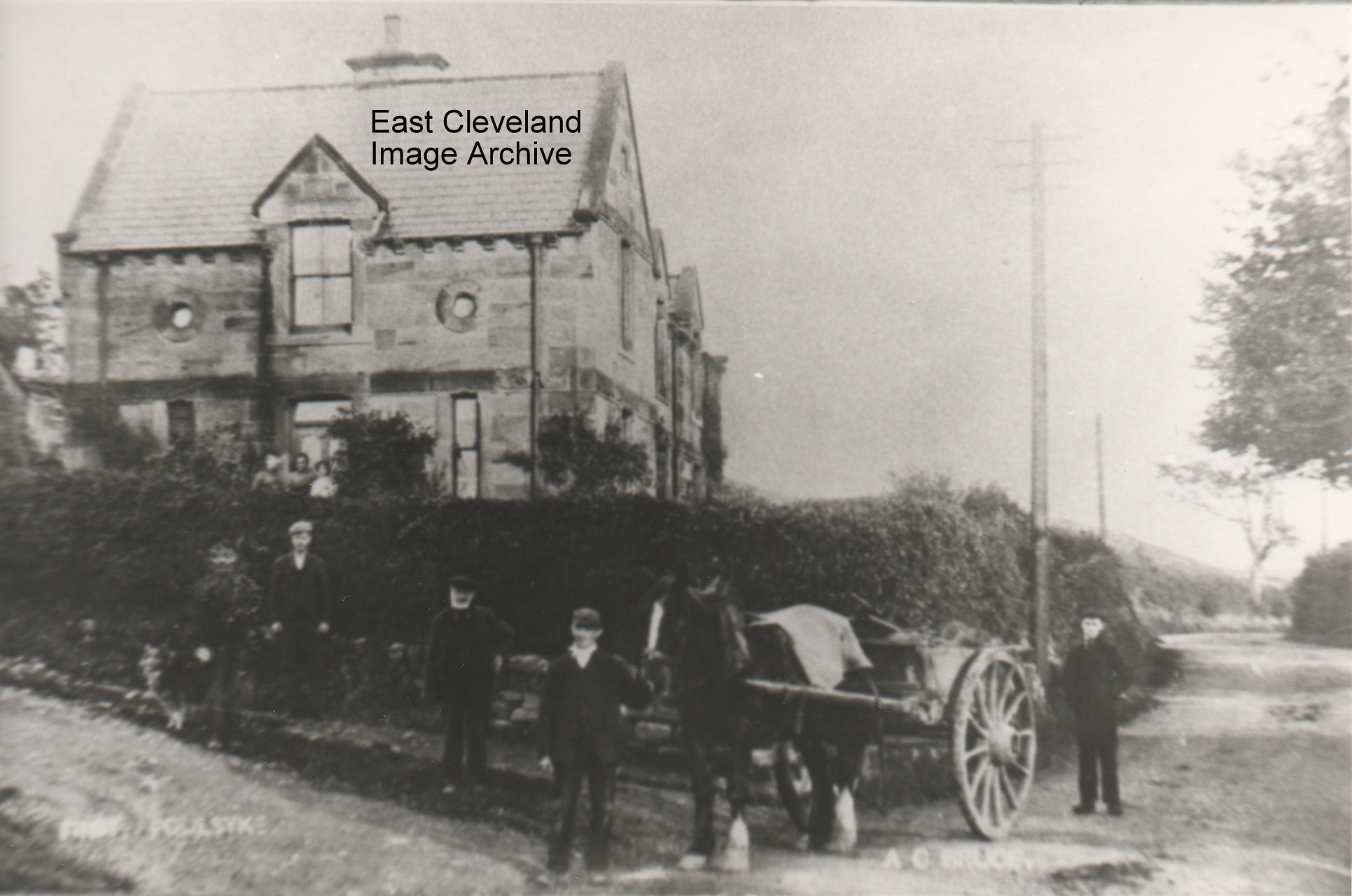
First Foulsyke as we always knew it; but this must be a very early photograph with no pavement and no tarmaced road. All the locals are out to have their photograph taken. Built by Lord Zetland from local stone, this row of three cottages (now two) was built to house cow keepers, who supplemented their income by renting land to support a couple of beasts. The name ”Foulsyke” means a ’muddy valley’. The residents in the 1940’s were: Readmans in the first house; Swalwells in the second house and the third one (correct me if I am wrong) was either a Miss or Mrs Shaw. Swalwells still have the farm; there was always a spring running in the farm-yard, where those that lived at East Loftus used to go and get water from when the taps went off. Which in the 40’s and early 50’s was very often.
Information courtesy of Jean Wiggins.
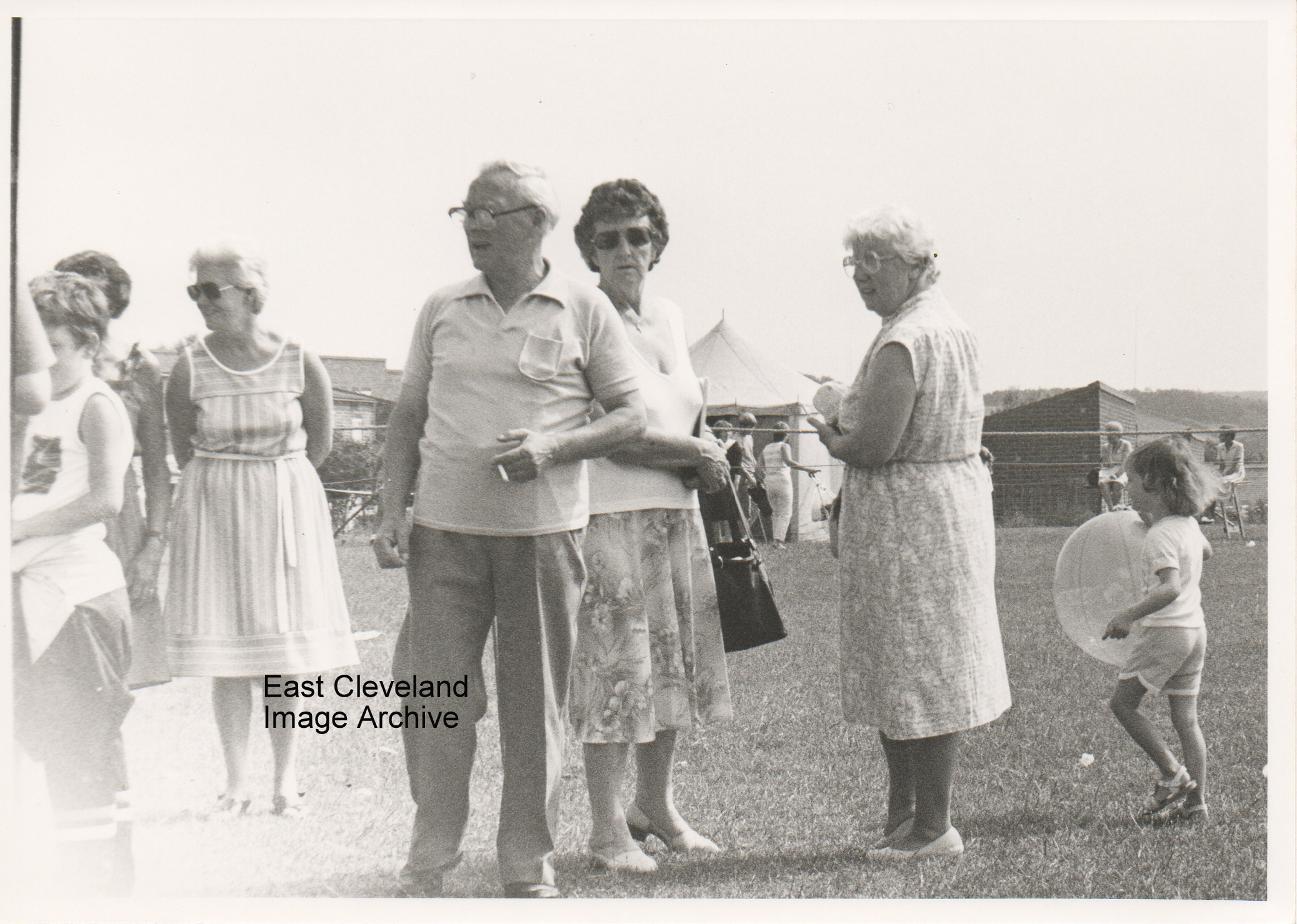
The photograph looks to have been taken from Ben Scotts field with a view of Westfield Estate in the background. The revival of Loftus Wool Fair – in 1989 – part of developments by Loftus Civic Trust to improve community spirit. The girl with balloon, Emma Whitney, next Elsie Pass, then Miffy Wood and wife, then Eileen Found. The year was 1989, held at the football field, Betty Garbutt-Johns, was “Chairman” of the Wool Fair committee.
Image courtesy of Eric Johnson, thanks to Stephen Steyert and Eric Johnson for the updates.
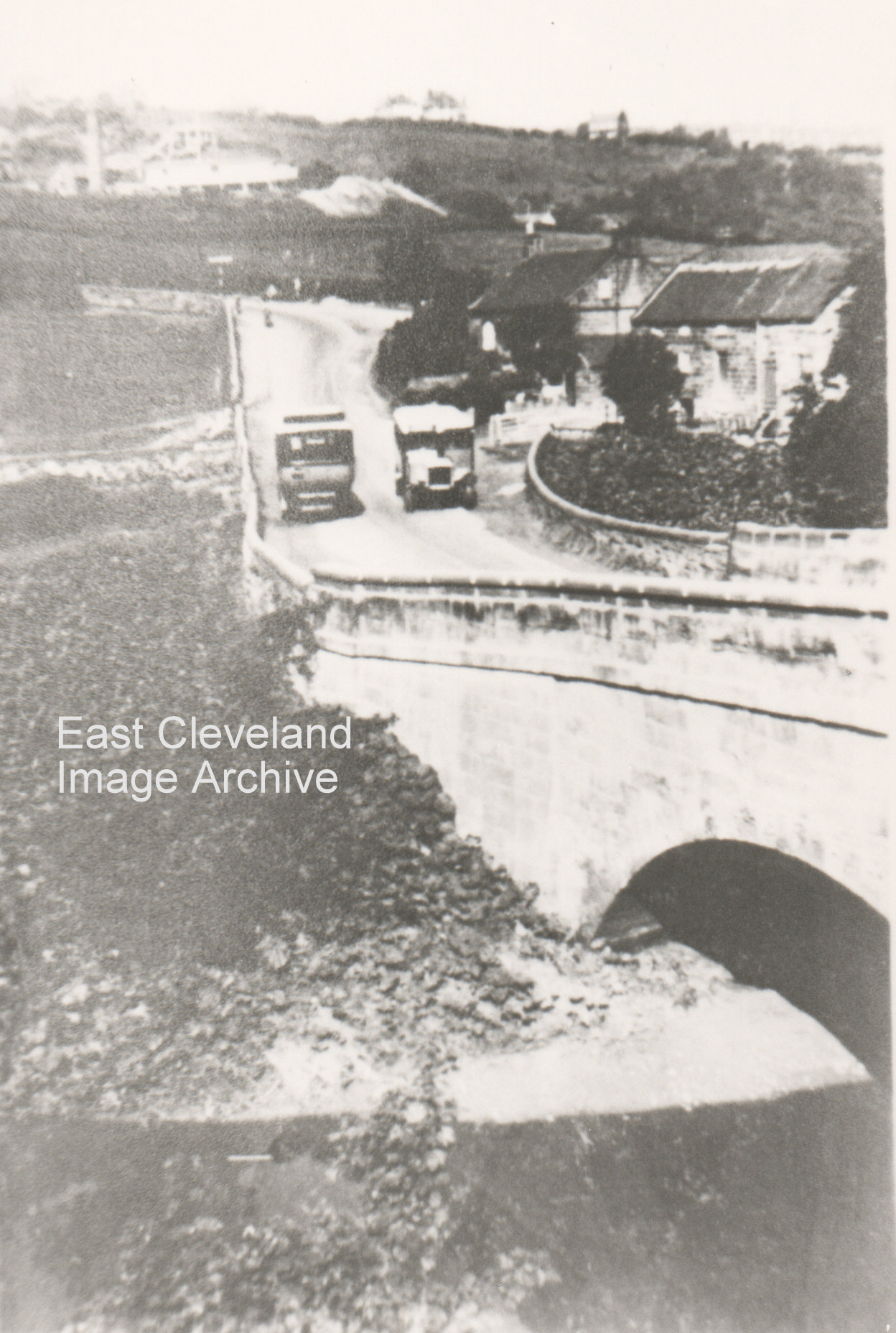
A very busy day on Mill Bank – two buses! – a lovely view of Kilton Beck and Kilton Mill; with Duck Hole pit in the background to the left.
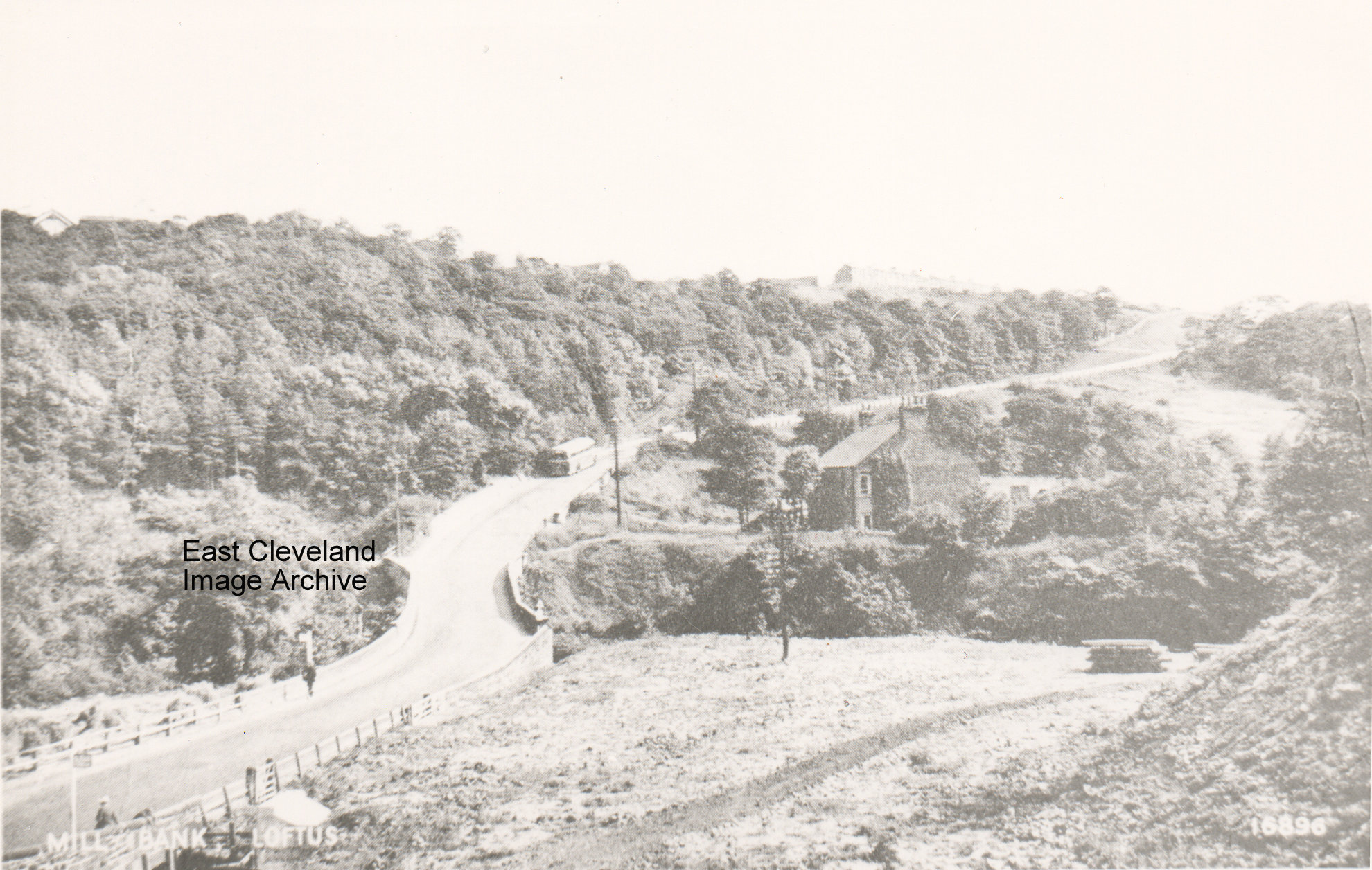
A bus half way up the bank and the entrance to Glover’s Path on the right; a pile of logs in the field (or are they pit props?). On the skyline on the left you can just make out St Hilda’s Terrace.
|
|










Recent Comments